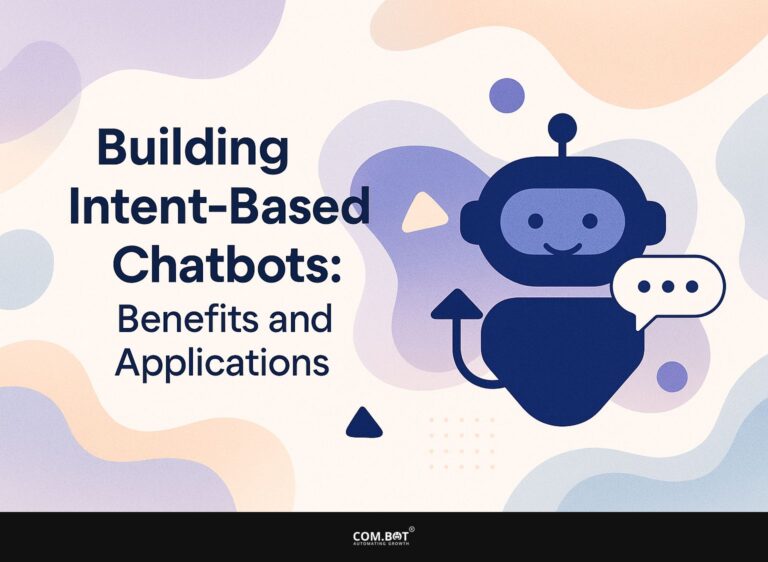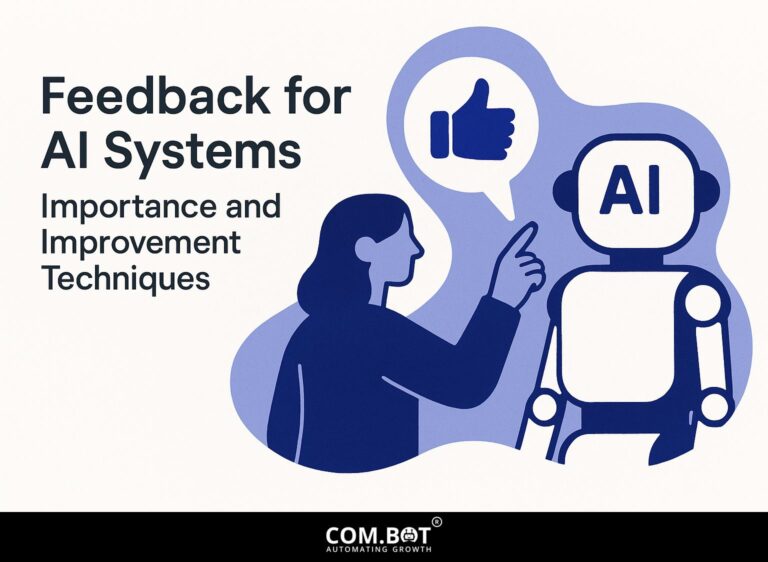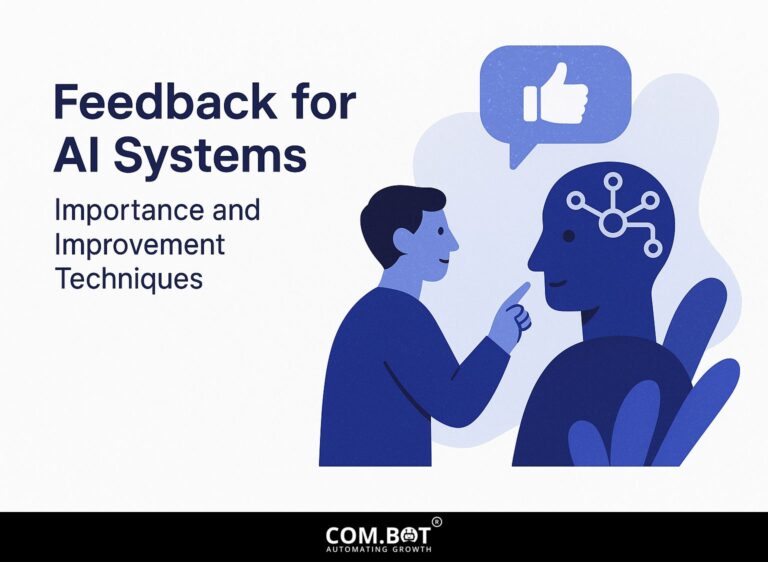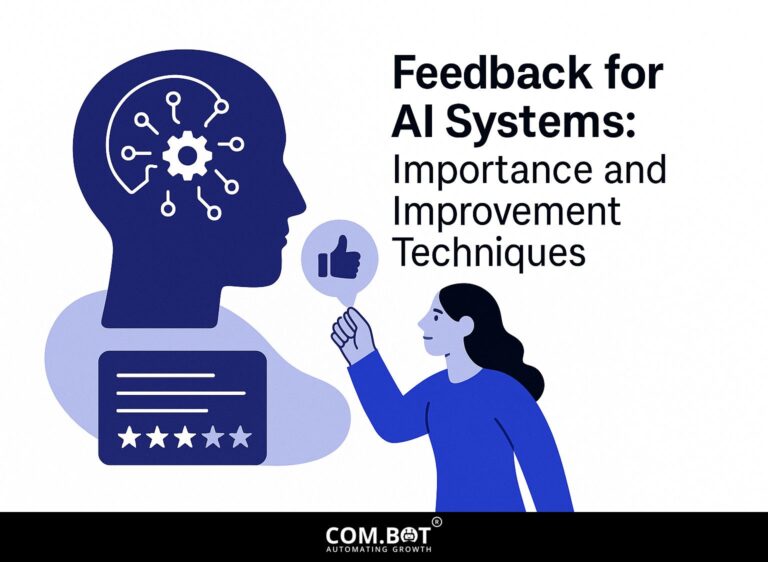Feedback for AI Systems: Importance and Improvement Techniques
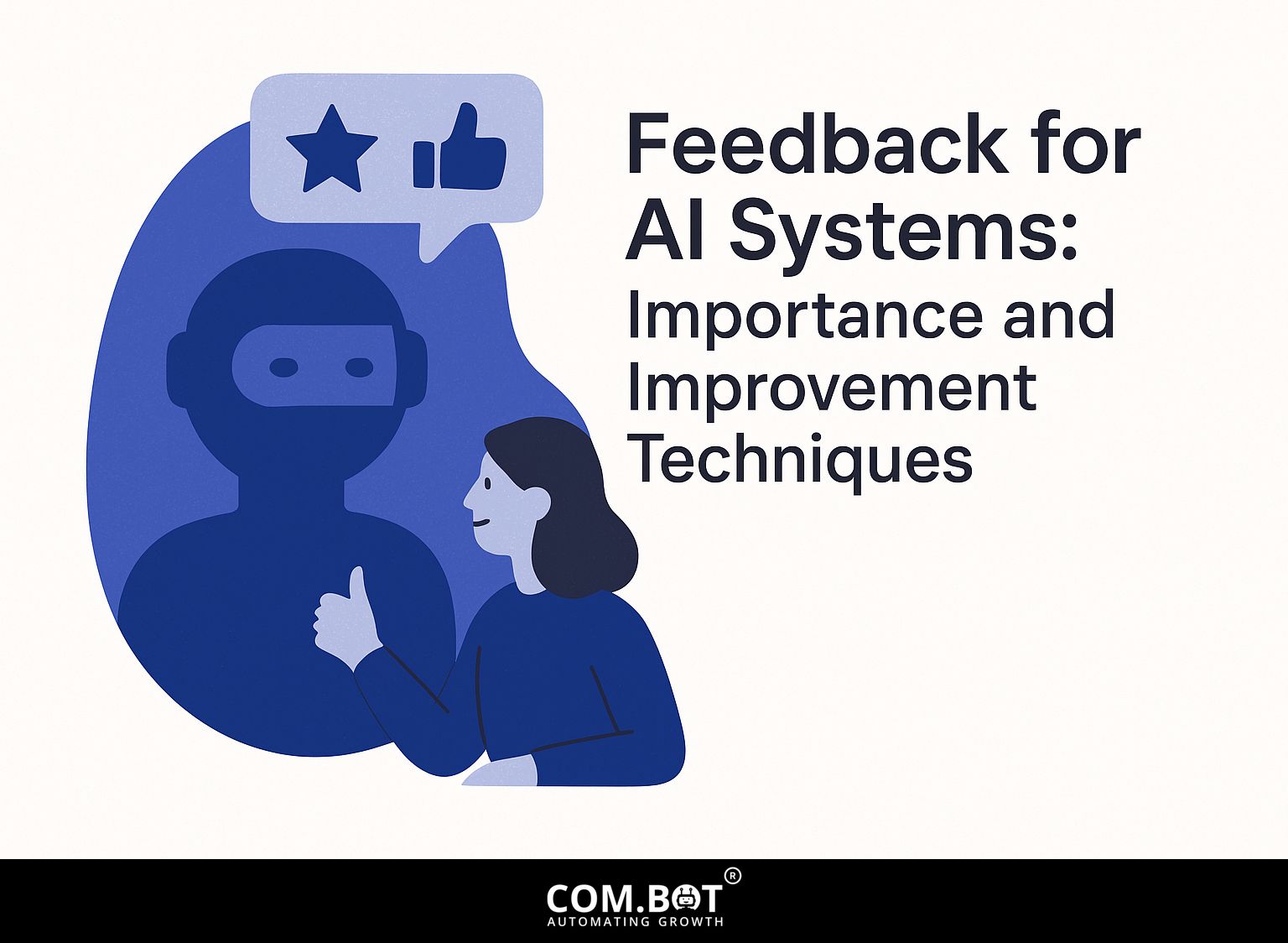
As artificial intelligence quickly changes, the AI feedback loop is important for improving how systems work. Effective feedback loops in machine learning improve algorithms and reduce biases, promoting ethical AI use. This article looks at the importance of feedback systems in generative AI, providing useful methods for better results. By learning about these factors, you will learn how to improve your AI systems to achieve better accuracy and accountability.
Key Takeaways:
- 1 Importance of Feedback in AI
- 2 Types of Feedback Mechanisms
- 3 AI Feedback Mechanisms Statistics
- 4 Techniques for Collecting Feedback
- 5 Implementing Feedback for Improvement
- 6 Challenges in Feedback Implementation
- 7 Upcoming Paths in AI Feedback Systems
- 8 Frequently Asked Questions
- 8.1 What is the importance of feedback for AI systems?
- 8.2 How does feedback help in improving AI systems?
- 8.3 What are some techniques for providing effective feedback to AI systems?
- 8.4 Why is it important to consider the source of feedback for AI systems?
- 8.5 Can AI systems use their own feedback for self-improvement?
- 8.6 How can feedback help verify that AI systems are used ethically and responsibly?
Definition and Purpose
Feedback loops in AI are systems that use data to help improve how well algorithms work and how fast they operate.
These loops are critical in refining machine learning models, often used in recommendation systems like Netflix.
For instance, user interactions, such as ratings or viewing history, inform the algorithm about preferences, enabling it to suggest more relevant content.
Tools like TensorFlow and PyTorch facilitate the creation of such feedback systems, allowing developers to implement real-time learning.
By regularly incorporating user feedback, AI can change and improve, providing a more customized experience, which increases user satisfaction and involvement.
Overview of AI Systems
AI systems use different methods, such as supervised and unsupervised learning, to handle data and create knowledge.
In supervised learning, algorithms learn from labeled datasets, improving their accuracy through user feedback. For example, chatbots use this method by studying past conversations to improve their replies.
In contrast, unsupervised learning identifies patterns without explicit labels, like clustering user interactions to suggest improvements.
Reinforcement learning helps systems improve their performance by giving rewards for useful actions. For instance, a recommendation system can tailor content to users based on their behavior.
These methods make AI systems work better, making them easier to use and more responsive.
Importance of Feedback in AI
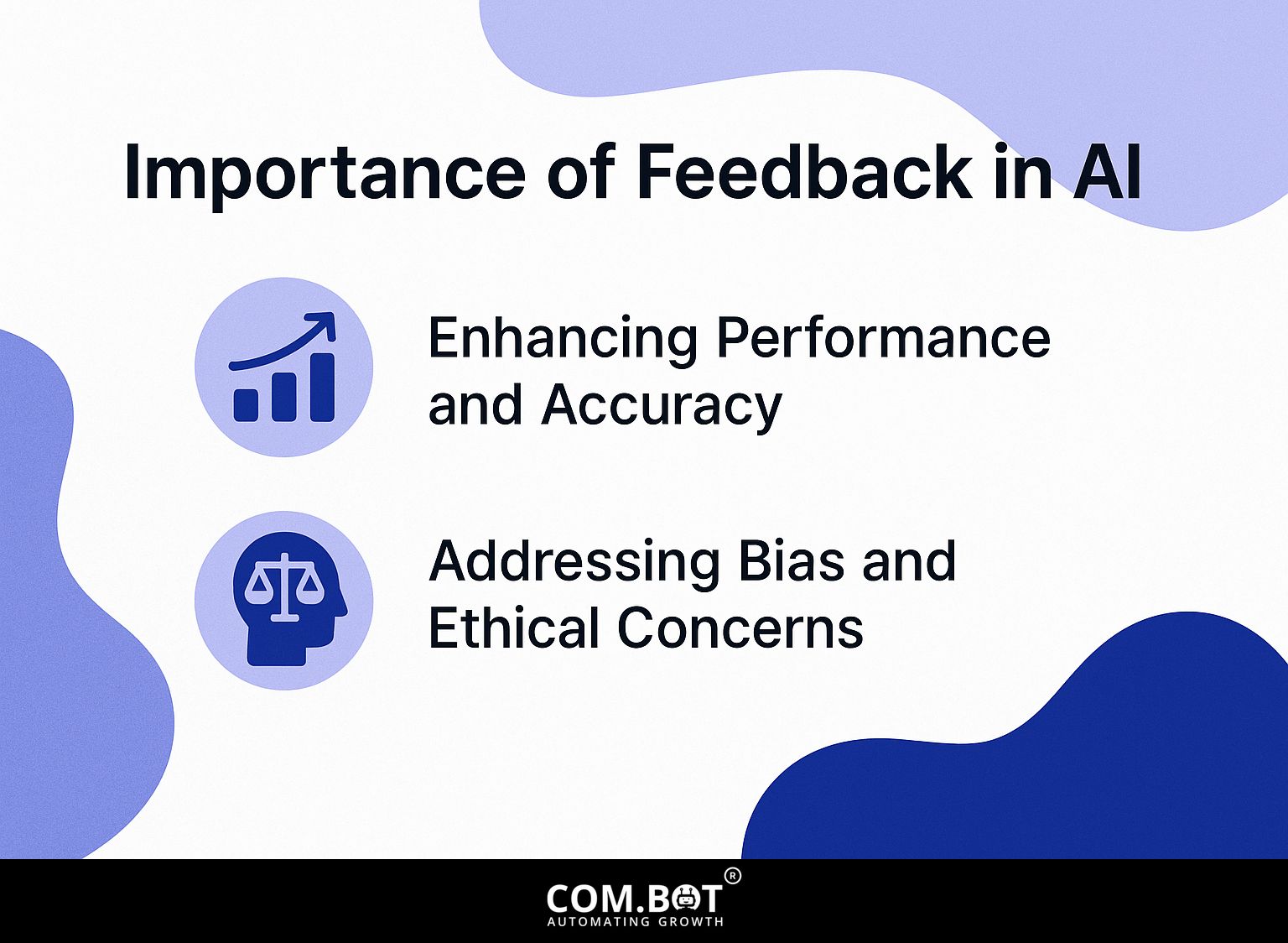
Feedback plays an important role in AI, often improving performance accuracy by up to 30% when applied well. As mentioned, this concept aligns with the principles discussed in our detailed exploration of Feedback for AI Systems: Importance and Improvement Techniques.
Enhancing Performance and Accuracy
Using user feedback can improve AI accuracy. For example, Chatbots became 20% more effective after regular updates.
One effective method for enhancing performance metrics is to implement A/B testing on variations of your chatbot responses. For example, use tools like BotAnalytics and Google Optimize to track user interactions and preferences.
You can find out which styles or phrasings users prefer, allowing you to improve your chatbot’s language.
Setting up a feedback loop where users can rate responses allows for ongoing adjustments. This process fixes mistakes and changes the chatbot’s learning model to better match what users want.
Addressing Bias and Ethical Concerns
Using different types of human feedback can reduce bias in algorithms, leading to AI results that are more accurate and fair.
A useful way to include various types of feedback is by using sentiment analysis. This approach checks how different groups of people feel about AI-created content.
Tools like Google Cloud Natural Language and IBM Watson can be employed for this purpose, allowing developers to identify potential biases in language or tone.
Regularly checking AI models is important; look at tools like AI Fairness 360, which offers detailed measurements and resources.
By looking at results from different user groups, you can change algorithms to create a fairer AI system overall.
Types of Feedback Mechanisms
Feedback can be provided to AI systems in different ways, from human suggestions to machine-based methods, each making the systems better in different aspects (see also: Feedback for AI Systems: Importance and Improvement Techniques).
AI Feedback Mechanisms Statistics
AI Feedback Mechanisms Statistics
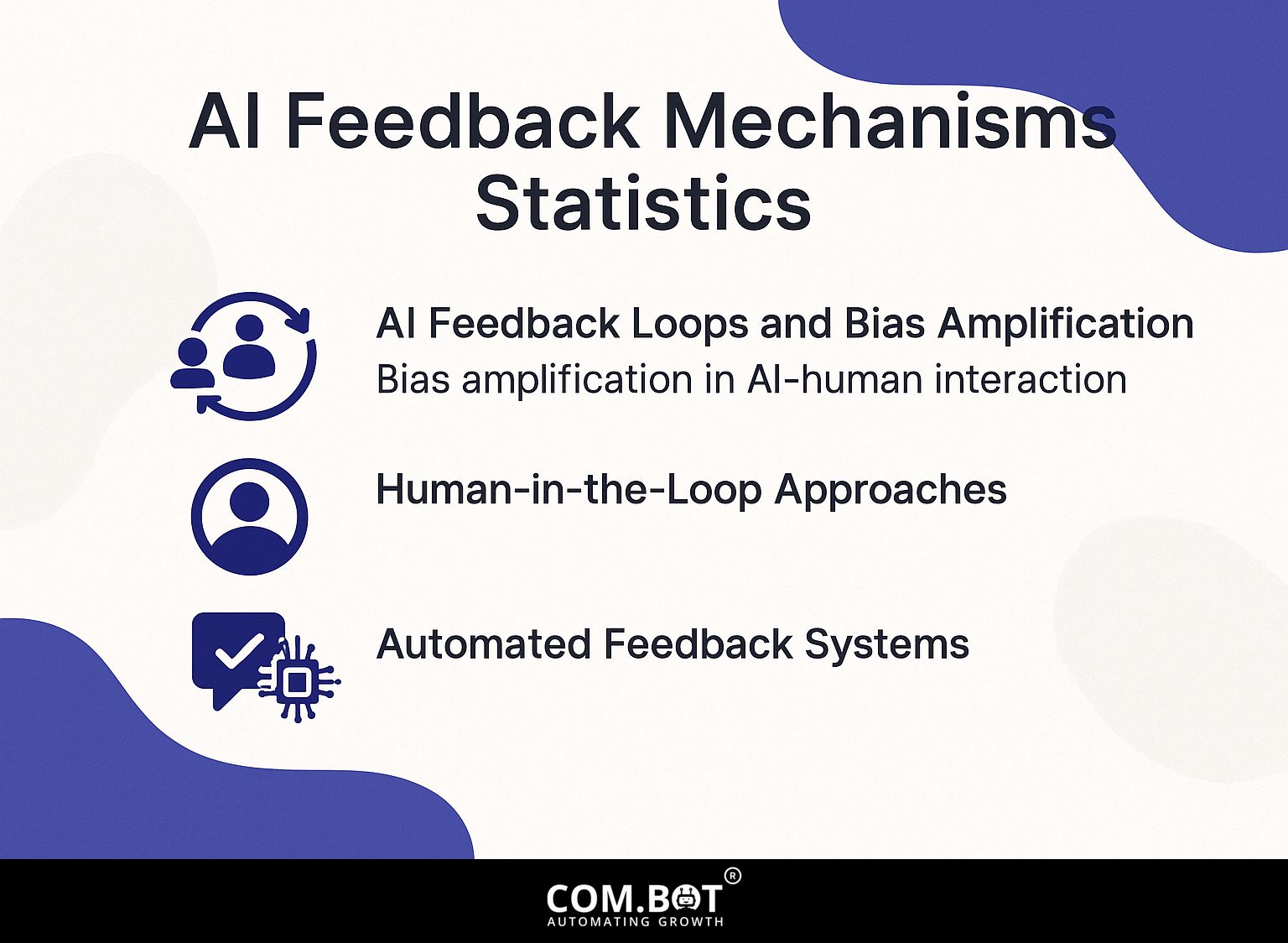
AI Feedback Loops and Bias Amplification: Bias Amplification in AI-Human Interaction
The AI Feedback Mechanisms Statistics shows how AI can increase biases and influence human decisions, highlighting important effects for creating and using AI.
In the realm of AI Feedback Loops and Bias Amplification The data highlights an important trend in how humans and AI interact with each other. Following AI exposure, there is a 5.84% increase in participants choosing white men over other demographics. This suggests that AI systems may inadvertently reinforce existing societal biases, influencing human choices and perceptions. Such an increase can create biased outcomes and choices, showing the need to fix bias in AI models.
- The emotion classification task further illustrates bias amplification. Initially, 49.9% of human classifications were labeled as ‘more sad’. After AI interaction, this perception increased to 56.3%, indicating that AI systems can affect how humans interpret emotions. This shift emphasizes the impact of AI on emotional intelligence tasks, potentially altering outcomes and decisions based on emotional assessments.
The data reveals that AI systems, if not carefully designed and monitored, can exacerbate biases rather than mitigate them. The increase in emotional classification as ‘more sad’ After interacting with AI, there is a possibility that AI systems might slightly alter how people view things. This could have significant effects in areas where emotional awareness is important, like healthcare or customer service.
This insight into bias amplification through AI Highlights the essential need for developers to use strong methods for finding and fixing bias in AI systems. As AI becomes increasingly integrated into daily life, ensuring these systems promote fairness and impartiality is essential to prevent unintended societal consequences.
Human-in-the-Loop Approaches
In human-in-the-loop methods, people use their judgment to improve AI processes, often resulting in better results.
For example, in reinforcement learning, a model might start to take actions based on predefined goals. Human feedback can greatly improve its performance. Those curious about the techniques used can explore our detailed article on Feedback for AI Systems: Importance and Improvement Techniques.
When humans review the model’s actions and provide corrections-perhaps by assigning rewards for desired behaviors-the model learns to align better with human expectations.
Tools like Amazon SageMaker Ground Truth help teams work together by labeling data and improving models quickly. Using human knowledge improves AI accuracy and keeps it useful for practical uses.
Automated Feedback Systems
Automatic feedback systems adjust AI behaviors using live data.
These systems use tools like anomaly detection software, which finds unusual patterns in data results.
For instance, TensorFlow offers TensorBoard for monitoring performance metrics, allowing rapid adjustments when anomalies arise. Similarly, using Amazon SageMaker can help implement automatic model tuning based on data feedback loops.
To effectively set up such a system, start by defining the key performance indicators you wish to monitor, then integrate these tools for ongoing analysis.
This active method improves AI dependability and keeps results meeting user needs.
Techniques for Collecting Feedback
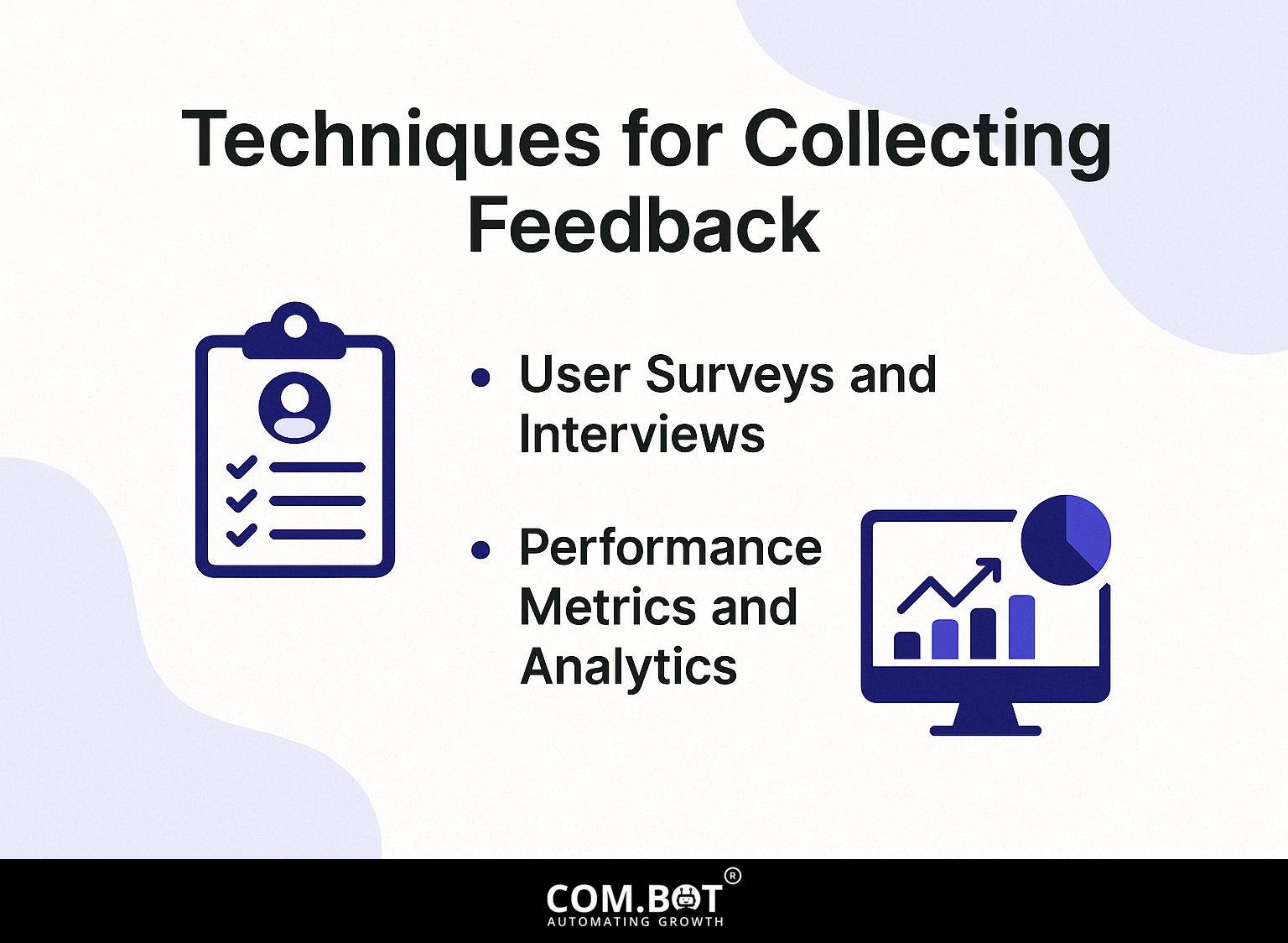
Collecting useful feedback is essential for improving AI. Using tools like surveys and data analysis helps guide development.
User Surveys and Interviews
User surveys provide important information that helps improve AI changes and increase user happiness.
To carry out successful user surveys and interviews, begin by clearly defining who your audience is.
Tools like SurveyMonkey and Google Forms simplify survey creation and distribution, ensuring a user-friendly experience. Aim for a response rate of 20% or higher by keeping your surveys brief and easy to understand.
To understand user opinions, ask questions about how happy they are with the product and what new features they want.
Once you have gathered the responses, look at the data to find patterns, such as frequent issues or needed changes. Use this information to make practical changes to your AI systems and make the user experience better.
Performance Metrics and Analytics
Using performance measurements helps AI developers see data patterns and improve based on user feedback.
Key performance indicators (KPIs) like user engagement rates, error rates, and response times give clear information.
For instance, using Google Analytics, developers can monitor how frequently users interact with specific features.
Tableau can show these trends, helping to find places that need improvement.
Set regular check-ins-weekly or monthly-to assess these metrics and pivot your development strategy accordingly.
By using practical information, teams can improve how users interact with AI products and increase their satisfaction.
Implementing Feedback for Improvement
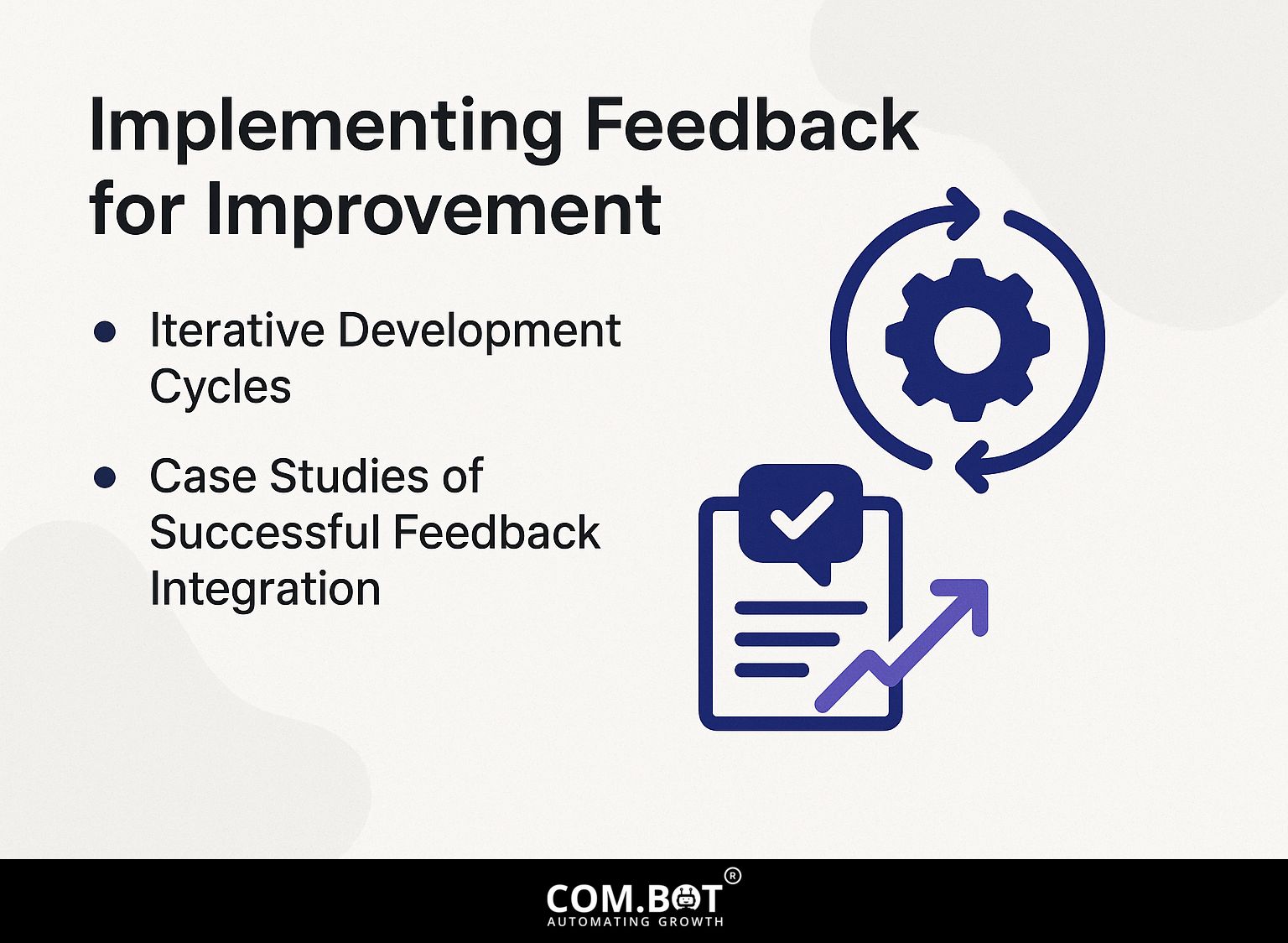
Adding feedback to AI systems needs a planned method, often resulting in steady improvements over time. Related insight: Feedback for AI Systems: Importance and Improvement Techniques
Iterative Development Cycles
Using repeated development cycles can improve how well AI can change, with many organizations saying they have cut error rates by 25%.
Scrum is a useful method for this approach, with brief, scheduled periods that support quick development cycles.
For example, a team might set specific goals for a two-week sprint, create a basic version of the product, and have a sprint review to respond to feedback.
Companies like Spotify have successfully used Scrum, leading to quicker development processes that respond to what users want.
Teams that work together and continually make improvements can quickly update their AI models, inspire fresh concepts, and lower risks.
Case Studies of Successful Feedback Integration
Case studies highlight successful feedback integration, showcasing improved user interactions in sectors like healthcare and e-commerce.
For instance, Amazon employs machine learning algorithms that analyze customer reviews, enabling real-time adjustments to product recommendations.
In the same way, Zocdoc’s healthcare platform improves its appointment booking system based on patient feedback, resulting in a 20% rise in user satisfaction.
Spotify integrates user playlist feedback to fine-tune its music recommendation engine, resulting in a notable rise in engagement metrics.
Tools like Google Analytics and SurveyMonkey are often used in these processes, providing important data that helps make things better over time.
Challenges in Feedback Implementation
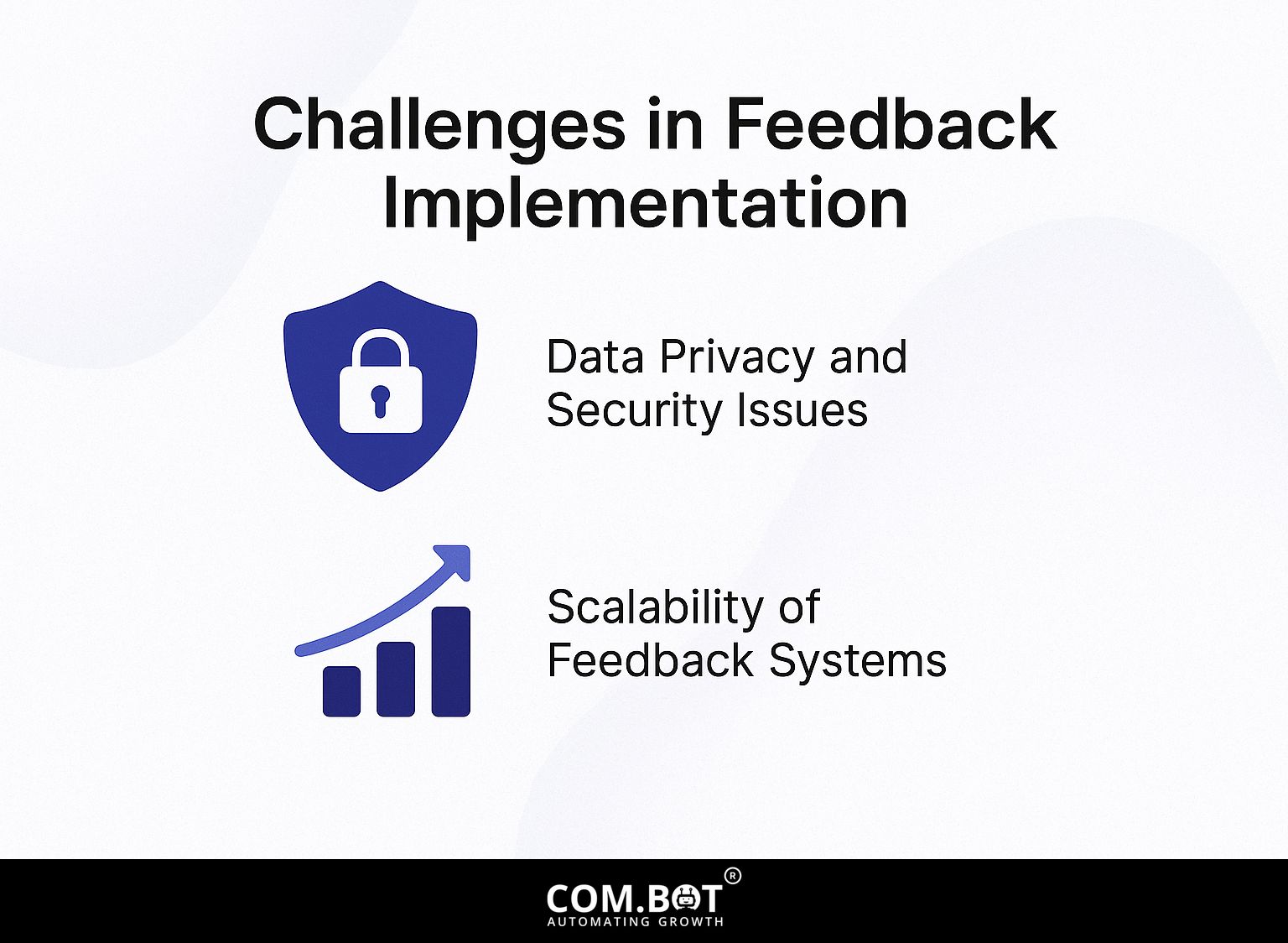
Introducing feedback systems in AI involves some difficulties, such as concerns about data privacy and problems with expanding the system.
Data Privacy and Security Issues
Data privacy remains a pressing concern, with 40% of users hesitant to provide feedback due to security fears.
To address these concerns, implement encryption techniques like AES for data at rest and TLS for data in transit, ensuring that user data is secure.
Establish transparent user consent protocols where participants are informed about how their feedback will be used and stored. Frequently share privacy rules and changes to build trust.
For example, platforms like Typeform allow you to create custom consent forms, making it easier to comply with privacy regulations while gathering important information.
Scalability of Feedback Systems
Expanding feedback systems can be difficult, often needing strong infrastructure to manage larger amounts of data well.
Using cloud platforms like AWS or Azure can significantly mitigate these challenges. For instance, AWS offers services like Amazon S3 for scalable storage of feedback data and AWS Lambda to process incoming data without the need for dedicated servers.
Azure provides similar capabilities with Azure Functions and Blob Storage. Using a microservices setup can improve system flexibility and manageability, enabling independent scaling of feedback processes.
This method can simplify data handling and improve the information obtained from user interactions.
Upcoming Paths in AI Feedback Systems
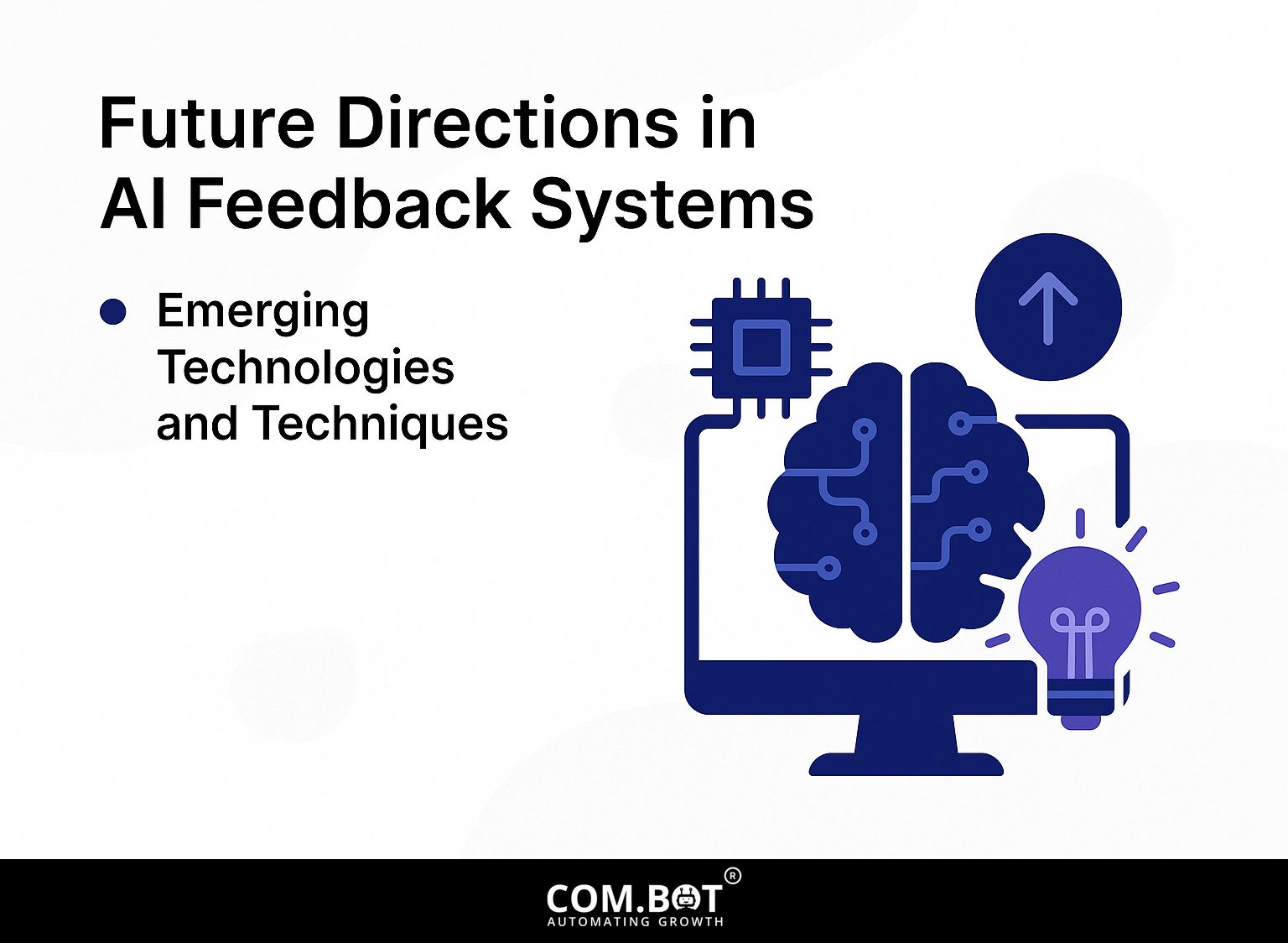
AI feedback systems are expected to improve learning speed and make users more satisfied.
Emerging Technologies and Techniques
Emerging technologies like generative AI are revolutionizing feedback systems, allowing for real-time adjustments based on user interactions.
These technologies improve user experience in various ways.
Natural language processing (NLP) can examine user feedback right away, allowing AI tools like chatbots to improve their replies quickly by considering the users’ emotions.
Machine learning algorithms can find user behavior patterns, making content display and customization better.
Platforms like Microsoft Azure use advanced analytics to quickly change applications to meet user needs, showing how using these tools can greatly improve feedback systems and responses.
Frequently Asked Questions
1.
What is the importance of feedback for AI systems?
Feedback is important for AI systems because it helps them improve their tasks and become more accurate. It helps the system find and fix any mistakes or unfairness, making it more dependable and credible for its intended purpose. Without feedback, AI systems might keep repeating the same errors and fail to adjust to new situations.
2.
How does feedback help in improving AI systems?
Feedback gives AI systems important information and data that help make needed changes and improvements. By examining the feedback, the system can improve by correcting its errors and making better predictions or choices later on. This continuous learning process leads to overall improvement and efficiency of the AI system.
3.
What are some techniques for providing effective feedback to AI systems?
Some effective techniques for providing feedback to AI systems include providing clear and specific examples, using a mix of positive and negative feedback, and utilizing real-time feedback. Feedback should be related and detailed regarding the task or issue being addressed. Giving feedback quickly is important for the system to make changes fast.
4.
Why is it important to consider the source of feedback for AI systems?
The source of feedback for AI systems can greatly impact the overall performance and improvement of the system. Consider the knowledge and trustworthiness of the source to make sure the feedback is correct and dependable. Biased or incorrect feedback can lead to further issues and hinder the system’s progress. Therefore, it is important to carefully consider the source of feedback for AI systems.
5.
Can AI systems use their own feedback for self-improvement?
Yes, AI systems can use their own feedback to continuously learn and improve. They are designed to analyze and interpret data, including their own performance data, to make necessary adjustments and improvements. This self-learning ability makes AI systems better at handling different situations and problems.
6.
How can feedback help verify that AI systems are used ethically and responsibly?
Feedback can be used to identify and address any biases or ethical concerns that may arise in AI systems. By regularly gathering comments, these problems can be found and fixed, making sure the system makes fair and responsible choices. Continuous feedback also allows for regular ethical evaluations of the system to prevent any potential harm to individuals or society.

